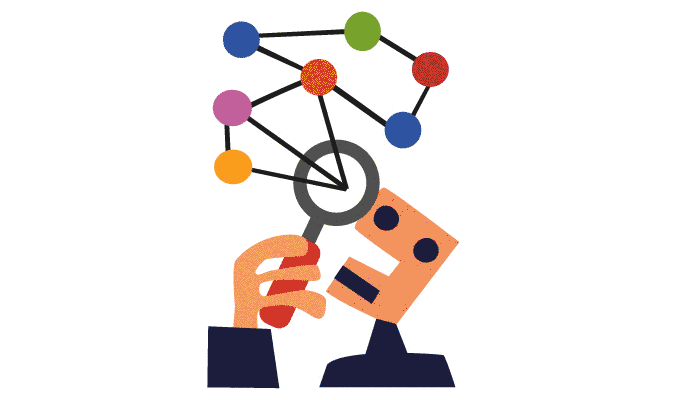Six Secrets to Doing Less
Why the best innovation strategies are rooted in the art of subtraction.
(originally published by Booz & Company)In the pursuit of innovation, leaders are often faced with three critical decisions: what to follow versus what to ignore, what to leave in versus what to leave out, and what to do versus what not to do.
Many of the most original innovators tend to focus far more on the second half of each choice. They adopt a “less is best” approach to innovation, removing just the right things in just the right way in order to achieve the maximum effect through minimum means and deliver what everyone wants: a memorable and meaningful experience.
It’s the art of subtraction, defined simply as the process of removing anything excessive, confusing, wasteful, hazardous, or hard to use—and perhaps building the discipline to refrain from adding it in the first place. These six rules help guide that discipline.
1. What isn’t there can often trump what is. As Jim Collins wrote in a 2003 USA Today article, “A great piece of art is composed not just of what is in the final piece, but equally important, what is not.”
Designers of the automotive youth brand Scion essentially used this strategy in creating the fast-selling and highly profitable xB model, a small and boxy vehicle made intentionally spare by leaving out hundreds of standard features in order to appeal to the Gen Y buyers who wanted to make a personal statement by customizing their cars with trendy options. Buyers would commonly invest an amount equal to the US$15,000 purchase price to outfit their xB with flat-panel screens, carbon-fiber interior elements, and high-end audio equipment. It wasn’t about the car, it was about what was left out of it—and the possibilities that absence presented.
2. The simplest rules create the most effective experience. Order and engagement might best be achieved not through rigid hierarchy and central controls, but through one or two vital agreements, often implicit, that everyone understands and is accountable for, yet that are left open to individual interpretation and variation. The limits are set by social context.
Visitors to the 2012 Olympic Games enjoyed the “shared space” redesign of London’s cultural mecca, Exhibition Road. It enabled motor vehicles, pedestrians, and cyclists to share the road equally, with the only rule being “all due respect to the most vulnerable.” Shared-space design is void of nearly all traditional traffic controls, signs, and lights. Curbs have been removed, red brick has replaced asphalt, and fountains and trees and café seating are placed right where you think you should drive. It’s completely ambiguous. You keep moving, yet you have no choice but to slow down and think. The result? Twice the fun and a steady flow—with half the normal number of accidents.
3. Limiting information engages the imagination. Conventional wisdom says that to be successful, an idea must be concrete, complete, and certain. But the most engaging ideas are often none of those things.
Specifics draw people in, but give too many and they turn their attention elsewhere. The former Cadbury Schweppes, makers of the U.K. candy favorite Cadbury Dairy Milk, aired a 90-second television commercial for its chocolate bars a few years ago that featured a gorilla (or rather, a man in a gorilla suit) seated at a drum set in a recording studio while Phil Collins’s “In the Air Tonight” played. For the first full minute, we see only close-ups of the near motionless gorilla, which looks to be contemplating the music and preparing for the performance of a lifetime. The next 26 seconds shows the gorilla rocking out on the drums. The only reference to the product is a four-second shot of the chocolate bar at the very end of the spot, with the tagline “A glass and a half full of joy.” Sales rose 10 percent in the two months following the ad, during which period it was viewed more than 7 million times on YouTube.
4. Creativity thrives under intelligent constraints. As writer, art critic, and essayist G.K. Chesterton once claimed, “Art consists of limitation. The most beautiful part of every picture is the frame.”
In the mid-1990s, the Mars Pathfinder team at Jet Propulsion Laboratory in Pasadena, Calif., had to respond to the new NASA mandate of “faster, better, cheaper” by launching a reliable, low-cost alternative to traditional space exploration. Their challenge: Create a rover that could efficiently return with new engineering and scientific data on Mars, and do it for less than one-tenth the typical cost of a space mission. It was a seemingly impossible task requiring a “change everything” approach. The results, though, were spectacular. The entire project, from concept to touchdown, was completed in 44 months—less than half the time of the previous Viking mission to Mars—with significantly fewer team members, and on budget. And it resulted in dozens of resourceful innovations, the most remarkable being the use of deployable airbags as the landing method.
5. Break is the important part of breakthrough. Innovation often demands a break with convention.
While the U.S. government struggles to solve the healthcare problem, one entrepreneur is taking a fresh approach. WellnessMart, MD, is a retail doctor’s office for healthy people to access services such as vaccinations, CPR training, and physicals. Founded by physician Richard McCauley in Los Angeles, WellnessMart is nothing like a typical medical office. Picture modern furnishings, an open floor plan, big-screen televisions, and walls covered with prominent menu boards listing services and cash pricing. In McCauley’s view, sick people and healthy people should not go to the same place, and healthcare isn’t just for unhealthy times. With low prices, no insurance accepted, no appointments, and no coughs and sniffles, the WellnessMart approach is a complete departure from other healthcare operations. The business has expanded to four retail locations in California, and McCauley is contemplating a national franchise.
6. Doing something isn’t always better than doing nothing. Innovation often demands taking a break from the rigors of work. Neuroscience now confirms that the ability to engineer creative breakthroughs indeed hinges on the capacity to synthesize and make connections between seemingly disparate things. A key ingredient is a quiet mind, severed for a time from the problem at hand.
Meditation—a practice that eliminates distraction and clears the mind—is an effective way to enhance self-awareness, focus, and attention, and to prime your brain for achieving creative insights. Oracle chief executive Larry Ellison meditates, and asks his executives to do the same. In 2007, Google initiated a mindfulness and meditation course at its Google University to help its employees maintain the company’s strong track record for innovation. Leaders at GE, 3M, Bloomberg Media, Green Mountain Coffee Roasters, and Salesforce.com meditate. So do Ford chairman William Ford and former corporate chiefs Bill George of Medtronic and Bob Shapiro of Monsanto. George, now a Harvard leadership professor, says that as CEO of Medtronic, he went so far as to set aside one of the company’s conference rooms for employees to take mental breaks.
Business leaders today face endless choice and feature overkill. They need to cut through the noise, using the art of subtraction to reveal the quiet truth. These six rules point to a single, powerful idea for achieving simplicity in any innovative effort: When you remove just the right things in just the right way, good things happen. ![]()
Author profile:
- Matthew E. May is a speaker, a creativity coach, and the founder of Edit Innovation, an ideas agency based in Los Angeles.
- This article is adapted from May’s most recent book, The Laws of Subtraction: 6 Simple Rules for Winning in the Age of Excess Everything (McGraw-Hill, 2013).




